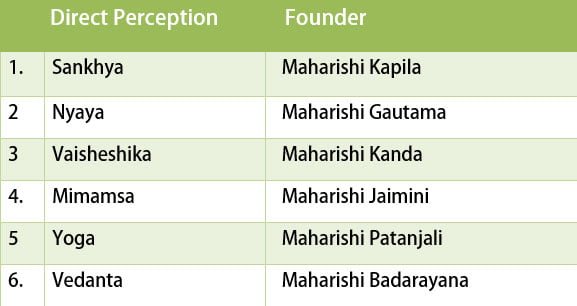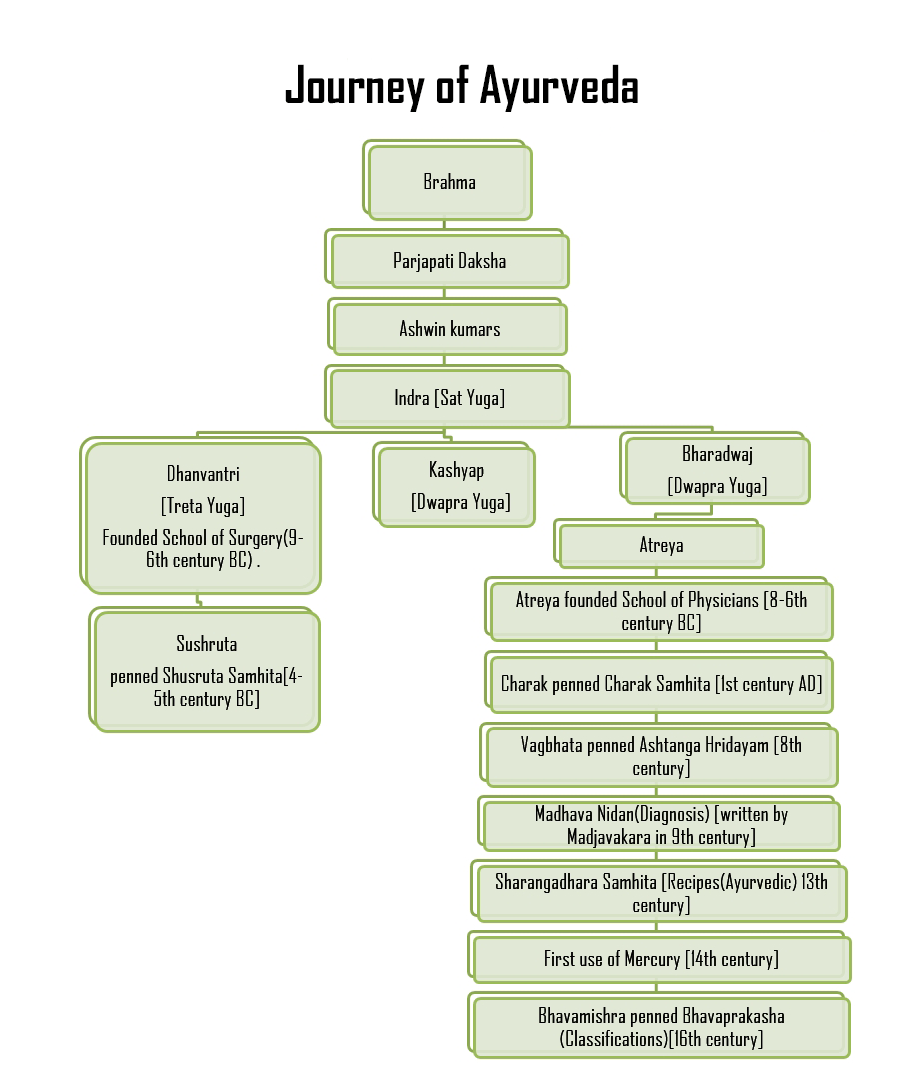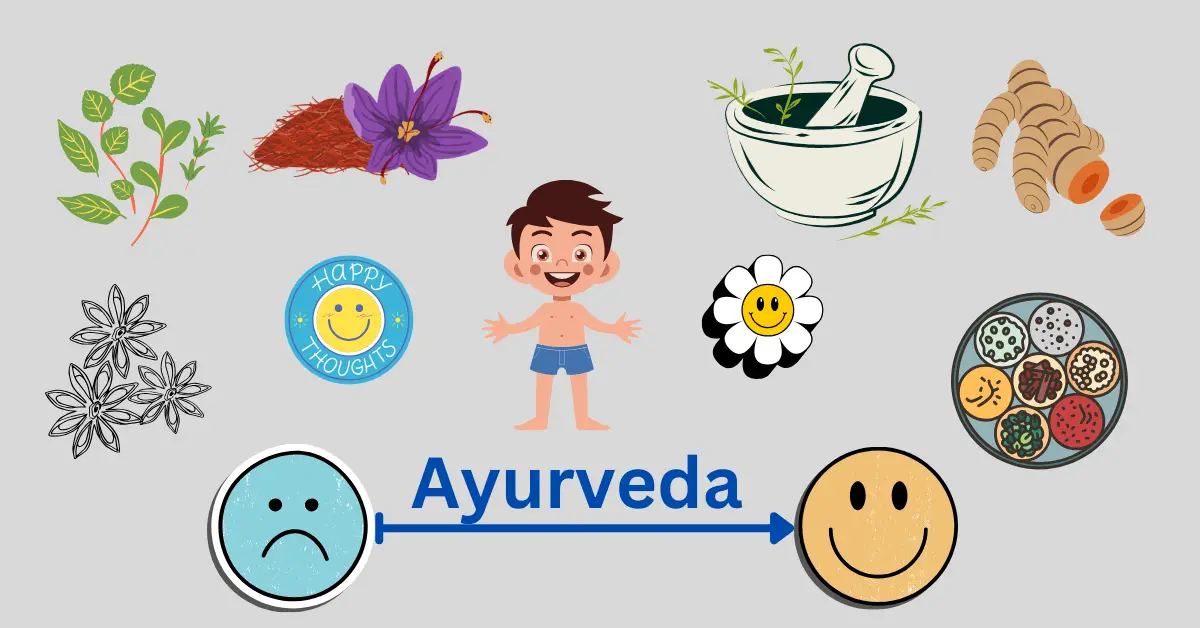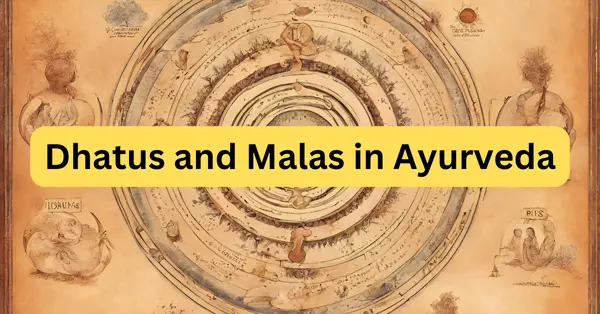In this article, we will have a detailed understanding of Ayurveda.
What is Ayurveda?
More than 5000 years ago, Ayurveda originated in India. The Sanskrit word “Ayurveda” originally means “the science of life”, and literally means knowledge of life; “Ayu” is life, and “Veda” is knowledge.
This SCIENCE deals with the nature, purpose of life, and other aspects of life i.e. health and disease, happiness and sorrow, pain and pleasure. It is an art of living unfolded from the practical and philosophical enlightenment with a deep understanding of the creation around us.
In simple words, Ayurveda is a medical and living science comprising the knowledge of herbs, foods, aromas, colors, yoga, psychology, mantras, lifestyle, and surgery.
According to Ayurveda, the purpose of life is to know the origin of life, within and out. It defines life as the synchronicity of mind, body, and consciousness in the cosmic realm. Each individual is a subset of the cosmos. This science offers a fervent interpretation of each person’s distinctive body, consciousness, and mind, which is the base of well-being.
Ayu (Life) is the Samyoga (combination) of senses, body, and soul. Ayurveda is the most pious science of life, beneficial to both in this world and the world beyond.
– Charaka (Father of Surgery)
Objective and Purpose of Ayurveda
The objective of Ayurveda is to sustain the health of a healthy person and cure a diseased person, with the purpose of healing and maintaining longevity and quality of life.
Due to its broad spectrum, Ayurveda accepts all the healthcare disciplines and intertwines them into a plan of treatment for every individual.
To understand this better, take for instance if an individual needs surgery, all the surgical procedures are available and if one needs psychological help or needs to revitalize the body and mind, there are processes for these also.
The effective thing is that Ayurveda circumscribes all these treatments and interrelates them suitably. Since it beautifully integrates contemporary techniques and developments with ancient wisdom, it is a ‘living’ science.
Notably competent in suggesting a treatment procedure suitable for an individual, Ayurveda is not rigid like other medical disciplines that are too rigid or “specialized” to frame a regimen incorporating termination of the causes, treatment of the disease, and rebuilding the body with a rejuvenation program. All these procedures are of utmost importance in Ayurveda.
When diet is wrong, medicine is of no use and when the diet is correct, medicine is of no need.
– Ayurvedic Proverb
Philosophy of Ayurveda
The philosophy of Ayurveda works upon the six systems of perception/philosophy (Shad Darshan), molded by the ancient sages (scientists), Vedas, and scriptures. The six systems are Sankhya, Nyaya, Vaisheshika, Mimamsa, Yoga, and Vedanta. These are all ways of aligning with reality and represent the six visions of life.

Out of these, three (Sankhya, Nyaya, and Vaisheshika) deal mainly with worldly/material subjects. The knowledge of physical creation and daily experiences of physical are the main objectives of these three.
Nyaya deals with cause and effect, reasoning (logical), and the right knowledge. Vaisheshika is more of the knowledge of particle interactions than a philosophy of conjectural thoughts. On the other hand, the Sankhya enlightens about the origin of the world.
The other three –Yoga, Mimamsa, and Vedanta– are more about the inner reality. A way to understand the outer reality from within. These are more on the side of pure perception than the aspect of physical interplay.
Let us discuss all the six systems one by one and know how these contribute to Ayurveda or how Ayurveda has accepted these.
1. Sankhya
Sankhya [San (truth) + Khya (to realize)] means to realize/know the truth of life. The great-enlightened Rishi (Seer) Kapila was the upholder of this system of perception/ philosophy.
He mentioned the 24 principles in the manifestation of the whole universe-
Prakriti (Nature), Mahad (Universal Intelligence) and Buddhi (Intellect), Ahamkara (Identity), Manas (Cylo of memory), five sense faculties (Touch, Smell, Sight, Taste and Hearing), five faculties of action (Procreation, Speech, Grasping, Walking and Elimination), Five objects of sensory perception [Sound, Touch (Sparsha), Form, Taste (rasa) and odor], and five elements (Air, Water, Fire, Earth and Ether).
Ayurveda with the help of Sankhya lets people know who they actually are. This is a powerful way to heal the human system.
We can understand this with an example- when someone scolds or yells at us, we become angry. One must understand that we are not the anger; we are the witness of the anger. Similarly, we are not the fear; but the observer of the fear.
We are not bored/tired/tempted/diseased; we are pure watchers of boredom/tiredness/temptations/diseases. People judge themselves in the mirror…ah…I do not like my nose, eyes, face, etc. We are something nobler and higher than mere body features.
2. Nyaya and 3. Vaisheshiksa
These go together, Vaiseshiksa tells about the Nava Karna Dravya (Nine Causative Substances of the Universe) and Nyaya elaborates on how to think about these Nine Causative Substances (Air, Water, Fire, Earth, Ether, Self, Manas (Mind), Time and Direction).
Rishi Gautama’s writings sketch the Nyaya, and Rishi Kanada gave us the Vaisheshika.
If we carefully notice, Ayurveda considers and accepts all the Causative substances. The five elements are the foundation of the Ayurveda that forms the three doshas- Vata(wind), Pitta (bile), and Kapha (Phlegm).
4. Mimamsa
The fourth Philosophy is Mimamsa, which means to scrutinize and completely understand the truth. It is a system of perception of knowing the truth by dharma/duty (actions in awareness). Sage Jaimini was a strong supporter of Mimamsa.
It is a complex philosophy. Ayurveda uses Mimamsa for healing purposes and includes rituals like burning candles, lamps or incense, offering flowers, fasting, and sprinkling water.
5. Yoga
Yoga is union. Union of the lower self with the higher self. It is a practical and exact science like Ayurveda. The great sage Patanjali organized the Yoga that we know today. Again, Ayurveda incorporates Yoga for healing purposes and classifies yoga asanas according to Vata, Pitta, and Kapha doshas.
6. Vedanta
Established by Badarayana, Vedanta is the sixth philosophy upon which Ayurveda works. Vedanta means the ending of Knowledge. Oftentimes, tremendous knowledge blinds a person.
Prejudiced with knowledge, the vision of the person becomes narrow and timid. It creates a hindrance in knowing the true self. Vedanta makes sure to remove this obstacle.
Vedanta teaches Ayurveda how important is the need for perfect health to achieve the goals be it material or spiritual.
To sum up,
- Sankhya offered Ayurveda the theory of cause and effect, and the theory of evolution.
- Nyaya and Vaisheshika gave Ayurveda logical thinking. Stated that our body is a machine and we must amend this machine until corrected. Modern physics depicts the same.
- Mimamsa gave all the rituals, ceremonies, and fasting for healing purposes.
- Yoga bestowed Ayurveda with a therapeutic system with discipline and exactness.
- Vedanta offered Ayurveda with deep thinking of the ultimate achievement of every human. It also emphasizes the need for health for all the purposes.
Branches of Ayurveda
There are namely eight branches-
1. Kayachikitsa (Internal medicine)
Related to the soul, mind, and body Internal medicine takes the help of over 2000 medicinal plants to treat a disease. It also uses a special therapy called Panchakarma that completely removes the toxins from the body.
It reverses the path of the disease from its manifestation stage to the bloodstream and finally into the original site of the disease (Gastrointestinal tract). Simple yet special diets, oil massage, and steam therapy are the main practices of Panchakarma therapy.
2. Shalakya Chikitsa (ENT/Ear Nose and Throat)
As the name suggests Shalakya Chikitsa treats all ENT diseases. In Sushruta Samhita, there are approximately 72 eye diseases mentioned with the surgical procedures of all the eye, ear, and nose disorders.
3. Vishagra-Virodha Tantra (Toxicology)
This branch covers topics from epidemics to air and water pollution. It also recognizes the toxins in animals, crops, vegetables, fruits, and minerals. Vishagra-virodh helps to find the cause of these anomalies in the environment and their antidotes.
4. Kaumarabhrutya (Pediatrics)
The prenatal and postnatal care of the baby and mother is the main aim of this branch. All the methods of conception; choosing the child’s gender, constitution; childhood diseases, intelligence, and midwifery are some of the topics it discusses.
5. Shalyachikitsa (Surgery)
The sophisticated methods of surgery were known long before more than 2000 years ago. This knowledge spread from India to the Middle East, China, Rome, Egypt, Greece, and eventually throughout the world. Strengthened by Sushruta, this branch is the last resort to save a person’s life.
6. Bhuta Vidya (Psychiatry)
An entire branch dedicated to the illnesses of the mind (including paranormal/demonic possessions) was functional during the older times. This functions on the yogic therapies (breathing techniques, mantra; repetition of particular words/phrases or thoughts) with the help of diet and herbs.
In the modern era, many selfish, greedy, and fake individuals are infecting this branch.
7. Vajikarna (Aphrodisiacs)
Largely misunderstood, Vajikarna deals with infertility (for those aspiring to conceive) and transmuting sexual energy into higher energies. It is not for mere futile sexual gratification and fantasies.
8. Rasayana Chikitsa (Rejuvenation therapy)
This branch believes in prevention and longevity. It recommends ethics and a virtuous lifestyle. The rejuvenation techniques help to enhance the intellect and strength with an aim to increase the lifespan.
We should always remember all these eight branches support and complement one another to treat and cure disease. These are not rival branches.
How does Ayurveda work?
दोष धातु मल मूलम् हि शरीरम्। (Dosha Dhatu Mala Mulam he Sareeram)
It means that the essential components of the human body are Doshas, Dhatus, and Mals. There are 3 doshas, 7 Dhatus, and 3 Malas. Doshas are the forces that control and regulate the Dhatus and Malas.
According to Ayurveda, the disease mainly manifests due to the imbalance of the three doshas (bodily humors). Health is an equipoise of the three doshas (Vata, Pitta, and Kapha). These three exist in a certain ratio if there is any change in the ratio, the health deteriorates and even life is threatened.
The outline of Ayurvedic treatment includes the removal of the harmful agent, soothing the harmed body part and mind, and eliminating the cause of disease.
The treatment is duplex:
- Dravyakritam
This is done with the help of material i.e. medicine/herbs, food, etc.
- Adravyakritam
It is done without the aid of those materials. Recreation and Fasting are the main agents here. Naturopathy also comes under it.
Finding the cause of a disease is still a mystery to Modern Science but it is the main goal of Ayurveda. Unlike Ayurveda, modern diagnosis can only detect an illness during the fifth and sixth stages of illness.
The six stages of development of the disease are-
- Aggravation
- Accumulation
- Overflow
- Relocation
- A build-up in a new site
- Manifestation
An established and true Ayurvedic physician can recognize illness in the process before it creates serious imbalances in the body.
The best medicine is one that cures a disease and the best physician is one who relieves the suffering of the patient. The best medicine for people living in any particular country is the one that grows in that country.
– Anonymous(help us find who is it)
Origin and Journey of Ayurveda
Ayurveda has its main origins in the Vedas especially from in the Atharva Veda. The Atharvaveda deals with the healing aspects of spirituality and life as a whole, it enlightens how to harmonize with nature and remain in one’s spirit.
Detailed discussions are presented on topics like organ transplants, artificial limbs, tridosha (Vatta, Pitta, and Kapha), and the use of herbs to cure diseases of the body and mind.
Vedas are ancient scriptures of timeless knowledge created by Brahma. Four main Vedas are- Rigveda, Yajurveda, Samveda, and Atharvaveda/Arthveda.
The knowledge was orally passed down from the sages of oral lineage; who were Bhrama, who taught to Prajapati, who passed it to the Ashwin twins. They then taught Indra, who in turn taught the knowledge of Ayurveda to later sages.

Then
Dhanvantri marvelously lived and practiced Ayurveda. He made remarkable contributions to Ayurveda; one among those contributions is the division of surgery into two branches- Salya Chikitsa and Salakya Chikitsa. He is considered the divine father and ‘inaugurator’ of Ayurveda.
During the 8th century BCE, this holistic knowledge fell into serious misunderstandings and lame subjective conclusions. To amend this, Charaka himself collected all the aspects of Ayurveda and began teaching by and large.
In the 5th century BCE, Ayurveda accepted the adapted surgical prowess and knowledge of Sushruta (the father of surgery) from the Dhanvantari Institution of Surgeons.
So
These two institutions of Ayurveda, the Atreya Institution of Physicians and the Dhanvantari School of Surgeons, reshaped Ayurveda into a “scientifically” approved and mainstream medical science. The obvious results and tests helped a lot in removing the doubts of scientifically-minded people. It also dispelled the sickening aura of mystery surrounding esoteric nonsense and celestial disclosure.
The Atreya School of Physicians granted the mastery of physiology, anatomy, etiology, pathogenesis, signs and symptoms of diseases, the methodology of diagnosis, treatment, the prescription for patients, Internal and external causes of diseases, prevention, and longevity.
While the Danvantari Institution of Surgeons dealt with surgical equipment, classification of wounds, burns, abscesses, fractures, amputation, plastic surgery and anal surgery.
Such was the expertise of surgery at that time that they could separate the human body into three different parts and stitch it back together without any harm i.e. the person be fully functional as a normal person.
Sushruta first introduced the knowledge of massage using vital (marma) points; later fused into Chinese acupuncture. Then people developed the Polarity Massage Therapy in America after rigorous studies of massage in India.
To get a clear picture one can say that Atreya, Harita, Agnivesha, and Charaka were more of physicians than surgeons. On the other hand, Dhanvantri, Sushruta, and Aurabhra were more surgeons than physicians.
Further
People from all over the world came to these institutions to learn this science in its entirety. Persians, Romans, Egyptians, Greeks, Afghanis, Chinese, Tibetans, and others traveled all the way to India to grasp the ‘science of life’ and took it back to their countries.
The Silk Route or Silk Road of India, a trade route between Asia, the Middle East, and Europe somewhat bridged the gap between the cultures. This was the route where the travelers/the world first stumbled upon the knowledge of Ayurveda.
The works of Charaka and Sushruta (the father of surgery) still exist. The third considerable disquisition is Ashtanga Hridayam by Vagbhata, a succinct version of the works of Charaka and Sushruta.
The three texts (Charaka Samhita, Sushruta Samhita, and the Astanga Hridayam) are presently in use. These books, containing the complete and original knowledge of Ayurveda, are over 1250 years old.
Now the “practical” people may ask If Ayurveda is so extraordinary why it is not widely practiced in the world today or at least in India? This is a reasonable question and it has an equally reasonable answer.
Ayurveda based on its philosophy accepts/accepts/will accept everything in its pertinent time and place and reject nothing. To simplify it, all facets of medicines might be useful, but only when one requires the use of suitable treatment.
This is also the reason why Ayurveda does not reject modern medicine. India was/is always a land of seekers; it allowed/allowed every other religion or science to express itself freely. As a result, many other religions grew and influenced the thinking of the people.
Over time, all the religions lost their true spiritual roots resulting in the clash of egos. This combined with the foreign conquests and invaders, upshot in the shutdown of Ayurvedic Colleges and the demolition of books.
One belief forced Ayurvedic doctors to write about meat to the translation of Ayurvedic texts while another belief avoided harming the body in any manner and demolished all the Ayurvedic books on Surgery.
In addition, for thousands of years, India practiced the science of Ayurveda continuously and effectively. During the 19th Century, the British brought Western medicine to India, considered as a superior format of medical care and treatment.
Then, the government policies suppressed and discouraged the practice of Ayurveda. As a result, people in huge numbers followed it and surrendered to the temptation of quick fixes/hacks, pills, shots, and drugs, dodging the personal duty for their well-being just like their Western counterparts.
Today
Many Indians are coming back to the native Ayurveda. They understood that modern/western medicine simply suppresses the symptoms with a hit-and-trial method.
It does not prevent the problem from recurring or help in curing. Allopathy is helpful in emergencies and traumas but it tends to ignore the importance of the individuality (Physical, mental, and emotional) of the patients.
The rigid concept of specialization does not exist in Ayurveda; it treats the entire personality, not just a particular organ or system.
At last
Although an effort is made. However, it is impossible to jot down the complete essence of Ayurveda in an article or a book.
In addition, what surprises is the amount of insight those mystical scientists and doctors (sages/seers/rishis) had? Without the complex modern technologies (MRIs, X-ray machines, CT scans), they had the knowledge of the human body inside out. Indeed they must have the technology far better than today.
One can read the ancient texts about fetus development, month by month. It amazes me when modern technologies validate ancient texts and descriptions.
One current concern is that people on both sides (Ayurveda and Modern medicine/Allopathy) want to deny the other science blindly. All the systems of healing are reconcilable. Ayurveda embraces all. No one will be snuffed out of a profession.
We can find unprincipled doctors in Allopathy or other practices, so we can find unprincipled/fake Ayurvedic doctors and pharmacies. Ayurveda always recommends the use of Common sense.





